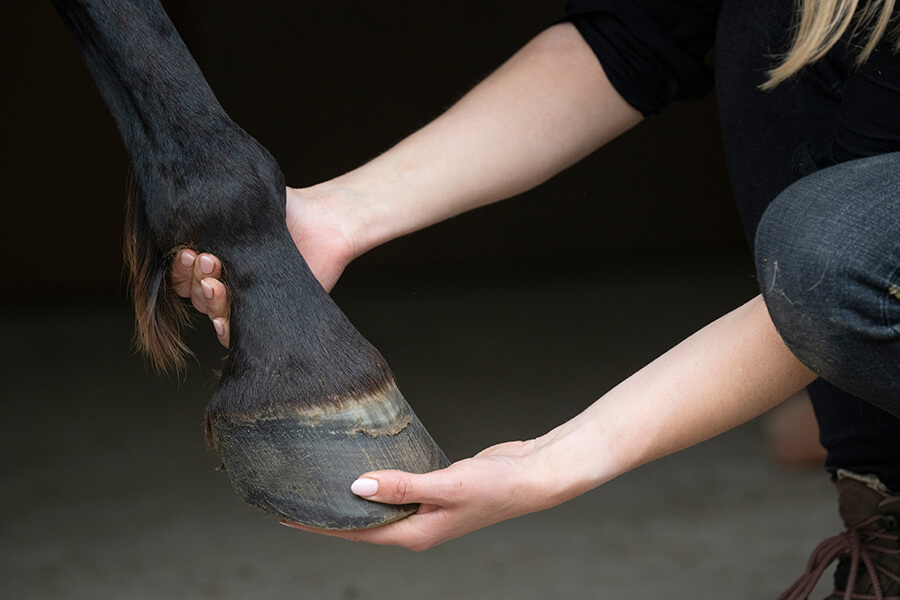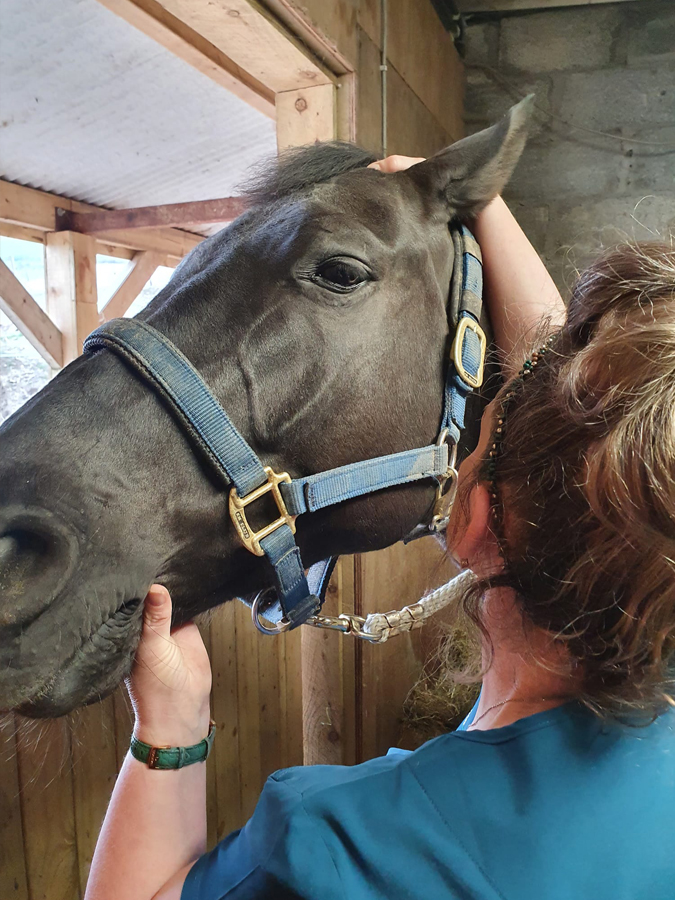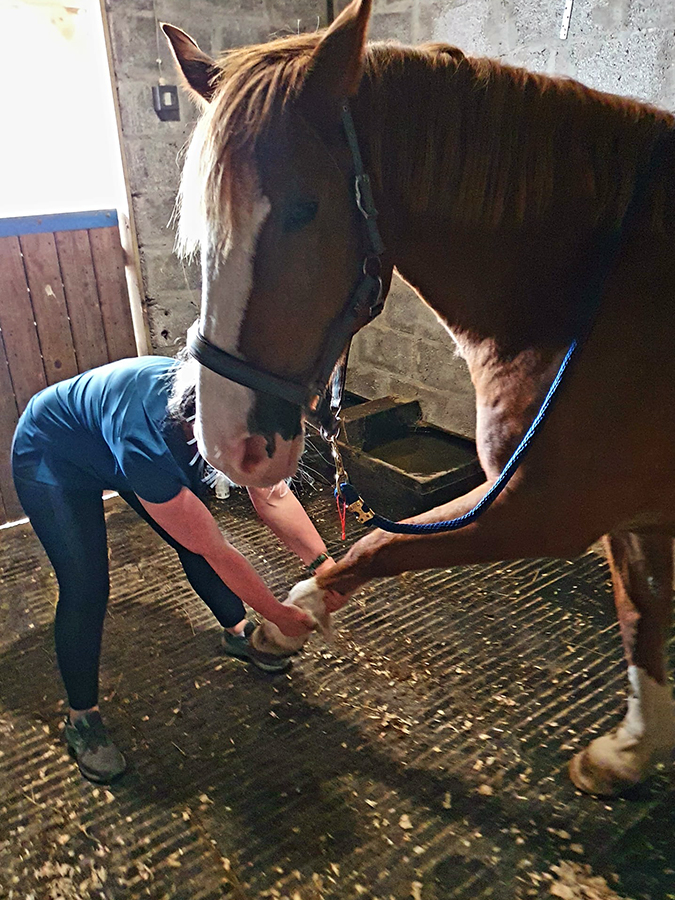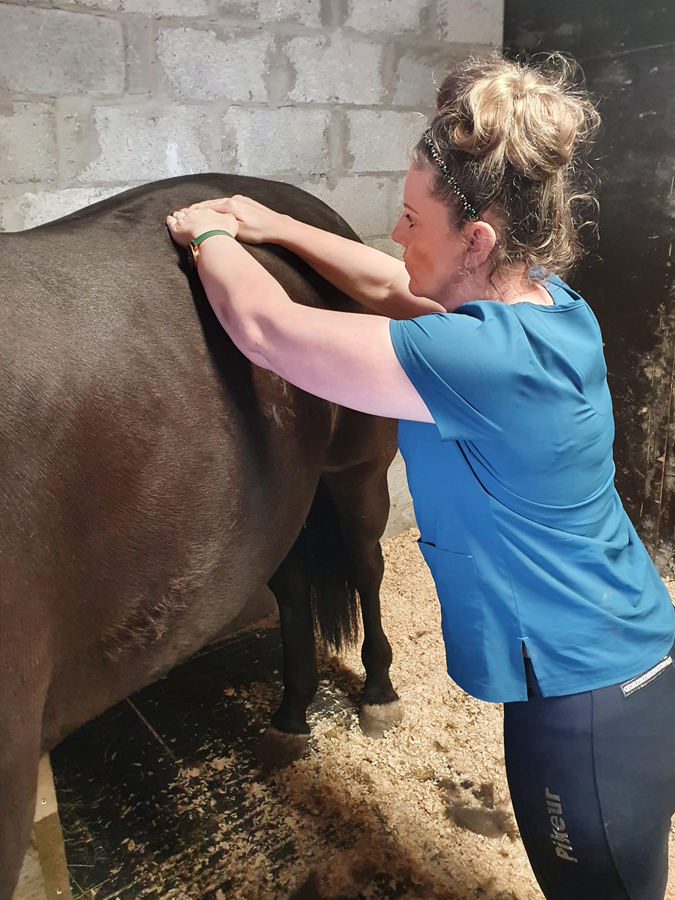Equine Musculoskeletal Therapy is manual (“hands-on”) therapy, that focuses on the biomechanical and structural model of the horse’s body, as part of a holistic approach to improve overall health.
Equine Musculoskeletal Therapy involves using a combination of manual techniques, in order to maximise movement and function, so that the horse can continue in, or return to normal motion. This can be beneficial to the comfort and wellbeing of all horses, irrespective of age, or discipline.
Manual therapy been used for thousands of years and is pain-free and non-invasive. It can be carried out as part of your horse’s ongoing wellbeing, for maintenance of optimal sports performance, or to target underlying a multitude of musculoskeletal conditions. It can also be carried out under veterinary referral, to improve mobility, rehabilitate post-injury and to help prevent recurrence of injury.
Addressing dysfunction in the horse’s musculoskeletal system, will in turn leads to proper functioning of all body systems, leading to optimisation of the health of the entire body and mind, by allowing for natural healing processes to take place. A tailored approach is provided for every individual horse.
Under optimum conditions nature will heal an injury. However, for many reasons, these conditions are not always readily available. Under such circumstances, an injury will take longer to heal than nature had intended, or worse, it may not heal at all, leading to chronic dysfunction. The aim of musculoskeletal therapy in these cases, is to provide optimal support for natural healing to happen, so that the body can self-repair naturally. Prompt attention to any changes in musculoskeletal health, is key to enhancing performance and to preventing more serious injury, as a knock on effect.
Horses do their best to communicate with us, if only we listen carefully! Many performance issues in horses, are caused by the presence of undetected underlying musculoskeletal pain. Musculoskeletal therapy can help to address underlying pain-related issues and can aid in restoring your horse to normal function, whether it’s a top level competition horse, or a field companion.
Veterinary treatment should always be sought for any undiagnosed underlying veterinary problems and veterinary referral will always be recommended for such cases. Manual therapy should never replace veterinary treatment.
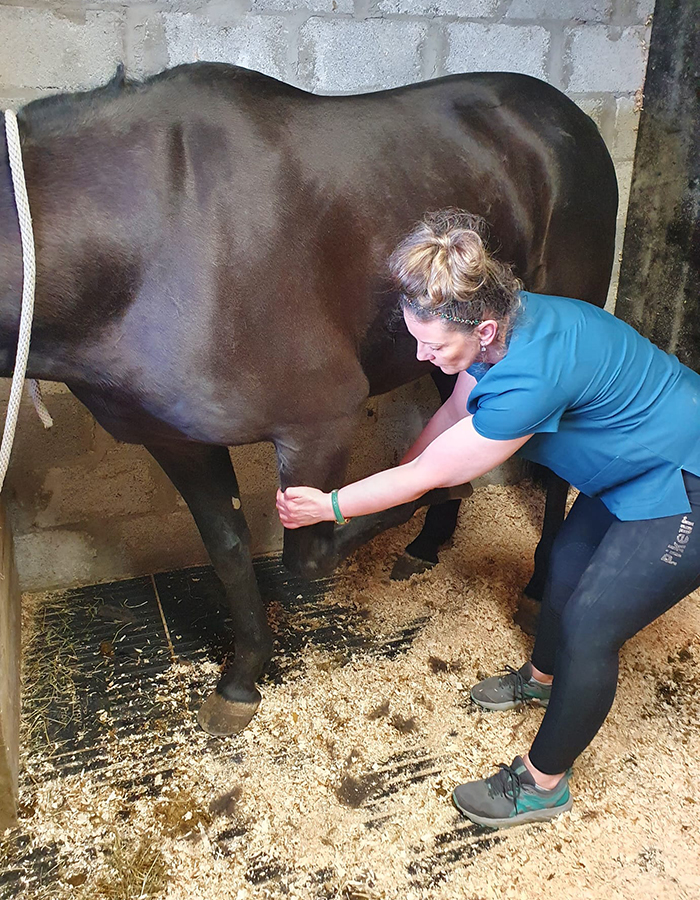
If you think your horse could benefit from musculoskeletal manual therapy, we would love to hear from you!
Let us give your horse a voice!
Targeted aims of musculoskeletal therapy
- Prehabilitation and injury prevention
- Fitness and conditioning
- Rehabilitation
- Performance enhancement and the treatment of musculoskeletal injuries
- Post-surgical recovery
- Therapeutic massage e.g. to enhance quality of life, for patients with degenerative conditions e.g. osteoarthritis – helping to slow degeneration and treating compensatory movement patterns
- Routine checks and maintenance massage
- Pre and post competition massage
Techniques used in this therapy
Equine musculoskeletal therapy is delivered using the following techniques:
- Effleurage, myofascial release, compression, petrissage, tapotment, ischemic pressure, direct pressure, vibration, friction, trigger-point release, lymphatic drainage and osteopathic articular balancing (OAB)
- Stretching
- Mobilisations
- Passive range of motion (ROM)
- Prescription exercise
Common equine conditions that can be treated
The following are just some of the common conditions that can be helped by equine musculoskeletal therapy:
- Muscle soreness, spasm, strain, bruising, tightness, atrophy or hypertrophy
- Tendons and ligaments injuries
- Other soft tissue injuries e.g. myofascial adhesions
- Osteoarthritis
- Degenerative Joint Disease (DJD)
- To alleviate and manage pain, in arthritic and diseased joints and slow the further disease progression
- Back pain e.g. kissing spines, compensatory back pain
- Sacroiliac joint injuries
- Neurological conditions
- To enhance post-surgical repair and rehabilitation
- Wound-healing and to minimise tissue scarring and proud flesh
- Splints
The benefits of equine musculoskeletal therapy
- Reduces pain and discomfort
- Improves circulation
- Reduces muscle tension and discomfort
- Stimulates the lymphatic system
- Reduces inflammation and oedema
- Enhances athletic performance
- Increases and maintains joint range of motion
- Improves suppleness and flexibility
- Improves gait
- Improves proprioception and regains correct movement patterns
- Increases muscle mass and tone
- Improves balance and co-ordination
- Provides physical and mental relaxation and improves mood, by stimulating the parasympathetic nervous system, known as the relaxation response
- Improves posture
- Supports the immune system
- Reduces the risk of injury
- Optimises full body health
- Improves horse welfare
Signs that your horse may require musculoskeletal therapy
The following are just some of the common equine conditions that can be helped by musculoskeletal therapy:
- A notable drop in performance
- Refusing jumps, bucking after jumps, taking extra strides, or jumping to one side etc.
- Uncharacteristically knocking poles
- Recent lameness
- Uneven stride length
- A notable difference between one rein and the other
- A preference for one rein
- A lack of flexion and bend at the poll
- Refusing to strike off in canter, or incorrect strike off
- A disunited canter
- Lateral stiffness
- High head carriage, or a hollow back
- Unhappy to see you approach with tack, or cowers at the back of the stable
- A dislike to being groomed
- A stiff, stilted, or altered gait
- Bucking, rearing, or showing uncharacteristic aggressive behaviour
- Head shaking, showing a poor attitude to work when ridden, or when being tacked up
- Carrying the tail to one side
- Girthing issues
- Cold backed
Contraindications
Equine musculoskeletal therapy will not be carried out, when any of the following conditions are present:
- Systemic infection
- A raised temperature
- Heat, or acute inflammation
- Viral diseases such as equine influenza, or herpes, or discharge, or mucous from the eyes, or nose
- Cardiovascular problems
- Malignant cancer
- Skin irritations, bacterial or fungal infections e.g. an abscess, or ringworm
- Pregnancy
- Colic, or exertional rhabdomyolysis (tying up)
- Shock
- Ruptures, or contusions
- Bleeding disorders, or suspected haemorrhage
- Open wounds
- Acute trauma
- Extreme exhaustion, or dehydration
- Neuritis (radiating nerve pain)
- An undiagnosed lameness:
If you think your horse could benefit from musculoskeletal manual therapy, we would love to hear from you!
Let us give your horse a voice!
